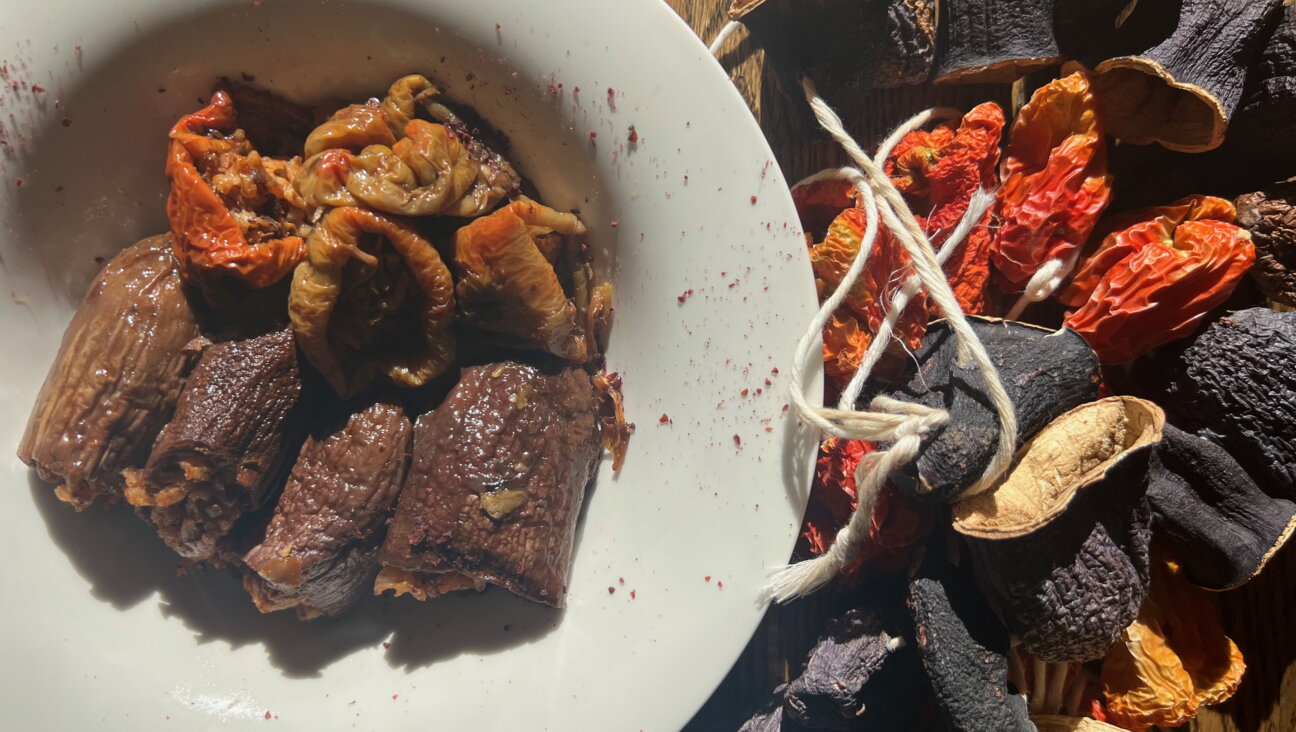Fighting Food Demons with Kashrut
My first roommate nine years ago told me a secret to stop snacking at night: eat one small piece of sliced turkey. Then, as someone who keeps kosher, I wouldn’t be tempted to eat any dairy cookies or ice cream for the rest of the night. It actually worked. Another kosher diet success story was a friend who did the Atkins diet and told himself that it was another layer of kashrut. After months of dieting, he found himself 30 pounds thinner.
For the many of us who are committed to maintaining a traditional kosher home, eating nutritiously is part of keeping kosher. Unfortunately, some have missed the kosher mark by failing to commit to eating healthily. Just as there are prohibitions against eating shellfish in the laws of kashrut, there are also prohibitions against overeating and not taking care of one’s body.
Soveya, a non-profit organization founded by Baltimore-based Rabbi Eli and Zakah Glaser, provides educational and coaching services nationwide to adults and children on Jewish nutrition and wellness. The husband and wife pair started the organization after each combated their own food demons by using a Torah-based approach and philosophy to weight loss.
The organization is geared towards Orthodox Jewish families, but many of the tools can easily translate to spiritual and physical fulfillment for less traditionally observant Jews. One of the recent weekly newsletters encouraged readers to take stock of our commitment to Judaism as well as our commitment to eating well through daily review and writing down the reasons for growth and the benefits to gain from eating nutritiously.
Beth Roth, a certified health coach in West Orange, New Jersey also supports the need to incorporate spirituality into weight loss plans. She explains that as a health coach, she explores the connection between food and other life factors, known as “Primary Foods,” such as relationships, self-care and spirituality, that are integral to leading a fulfilling life. As a health coach, her goal is to help clients define a wellness plan and then incorporate spirituality into their everyday life. One of the exercises that Roth uses in her practice is a “Circle of Life”, which helps clients discover which primary foods need more attention to create balance. Roth has suggested, “If spirituality is absent from a client’s ‘Circle of Life’ then they are missing a significant part to their wellness path.”
Knowing that spirituality is so tightly connected to our own physical well being, there are many opportunities to use the food we eat to deepen our faith and in turn to make healthier choices in the kitchen. Whether we find religious fulfillment through learning Talmud or practicing yoga, it seems worthwhile to explore our own inner peace through the outer aisle.
The Forward is free to read, but it isn’t free to produce

I hope you appreciated this article. Before you go, I’d like to ask you to please support the Forward.
Now more than ever, American Jews need independent news they can trust, with reporting driven by truth, not ideology. We serve you, not any ideological agenda.
At a time when other newsrooms are closing or cutting back, the Forward has removed its paywall and invested additional resources to report on the ground from Israel and around the U.S. on the impact of the war, rising antisemitism and polarized discourse.
This is a great time to support independent Jewish journalism you rely on. Make a gift today!
— Rachel Fishman Feddersen, Publisher and CEO
Support our mission to tell the Jewish story fully and fairly.
Most Popular
- 1

Fast Forward Ye debuts ‘Heil Hitler’ music video that includes a sample of a Hitler speech
- 2

Opinion It looks like Israel totally underestimated Trump
- 3

Fast Forward Student suspended for ‘F— the Jews’ video defends himself on antisemitic podcast
- 4

Culture Cardinals are Catholic, not Jewish — so why do they all wear yarmulkes?
In Case You Missed It
-

Opinion Despite Netanyahu, Edan Alexander is finally free
-

Opinion A judge just released another pro-Palestinian activist. Here’s why that’s good for the Jews
-

Culture Is Pope Leo Jewish? Ask his distant cousins — like me
-

Fast Forward ‘New Jersey tough’: Gov. Phil Murphy on released Hamas hostage Edan Alexander, a Tenafly native
-
Shop the Forward Store
100% of profits support our journalism
Republish This Story
Please read before republishing
We’re happy to make this story available to republish for free, unless it originated with JTA, Haaretz or another publication (as indicated on the article) and as long as you follow our guidelines.
You must comply with the following:
- Credit the Forward
- Retain our pixel
- Preserve our canonical link in Google search
- Add a noindex tag in Google search
See our full guidelines for more information, and this guide for detail about canonical URLs.
To republish, copy the HTML by clicking on the yellow button to the right; it includes our tracking pixel, all paragraph styles and hyperlinks, the author byline and credit to the Forward. It does not include images; to avoid copyright violations, you must add them manually, following our guidelines. Please email us at [email protected], subject line “republish,” with any questions or to let us know what stories you’re picking up.















